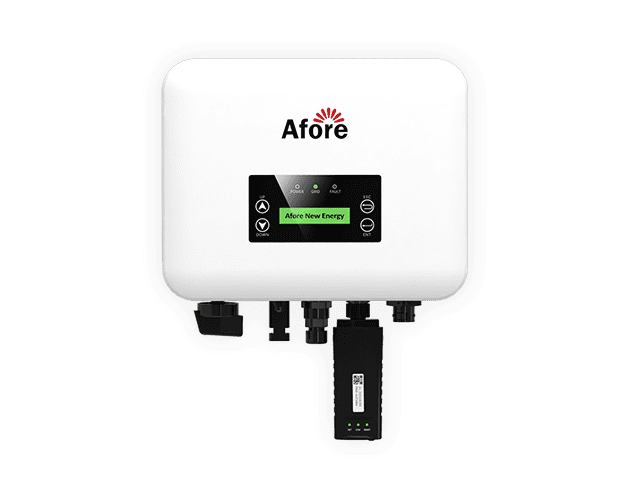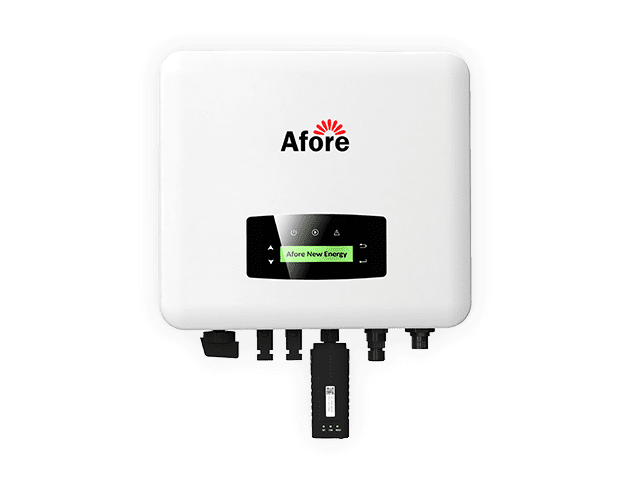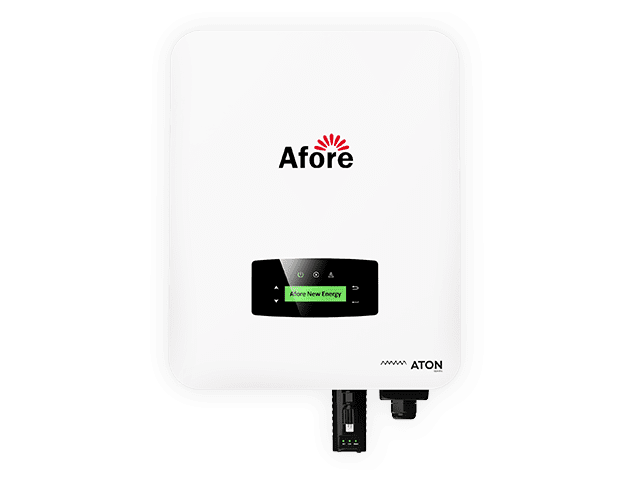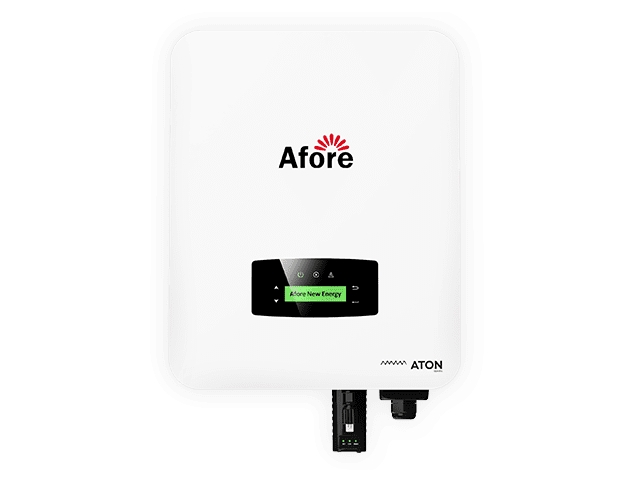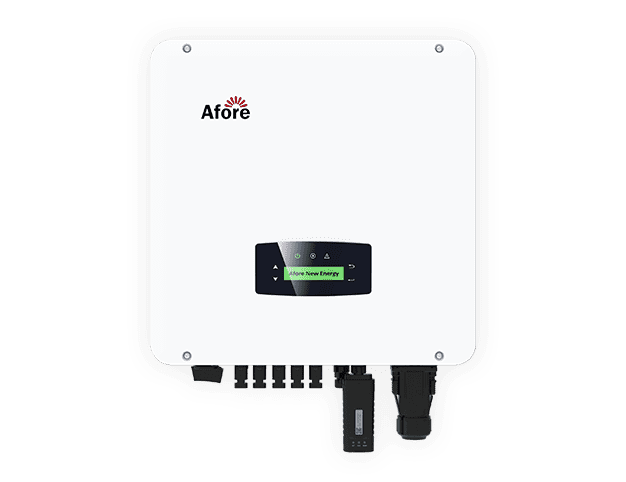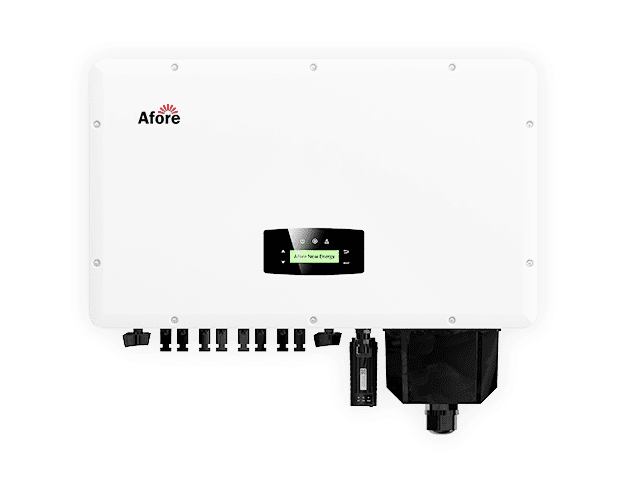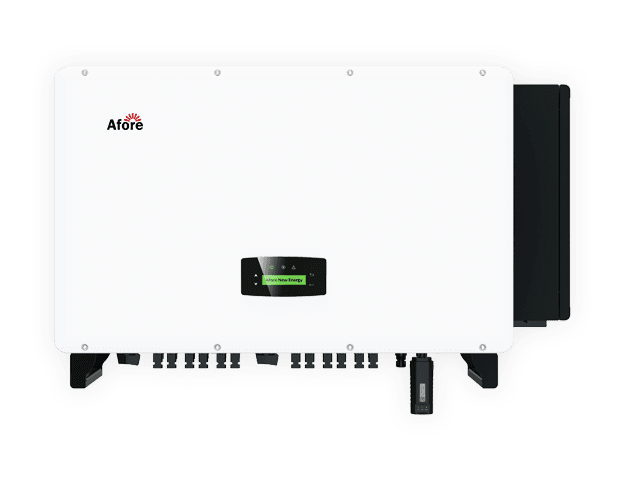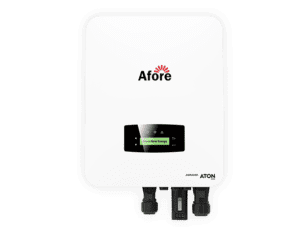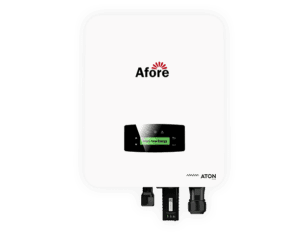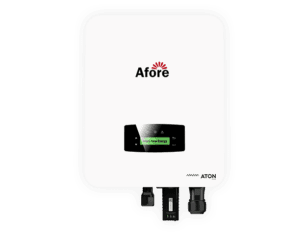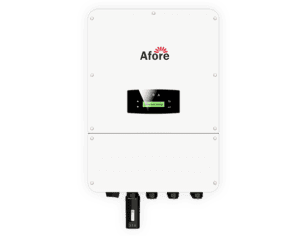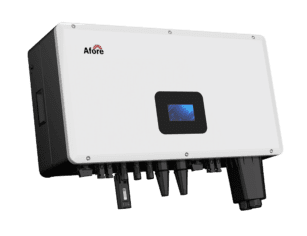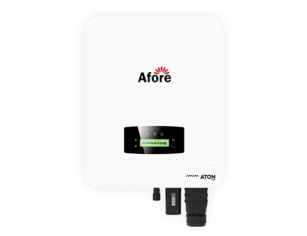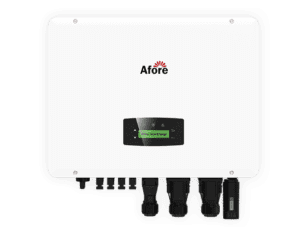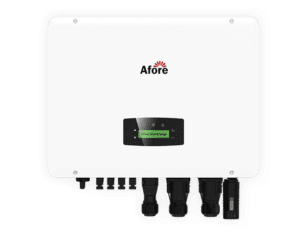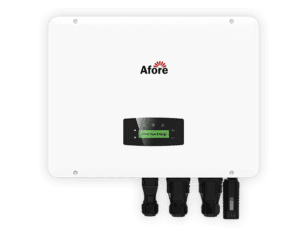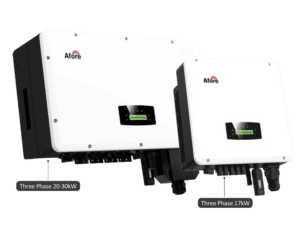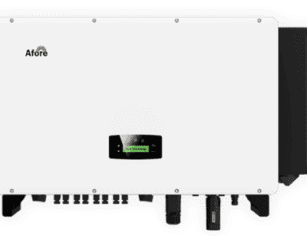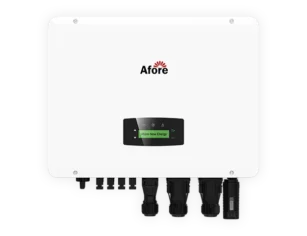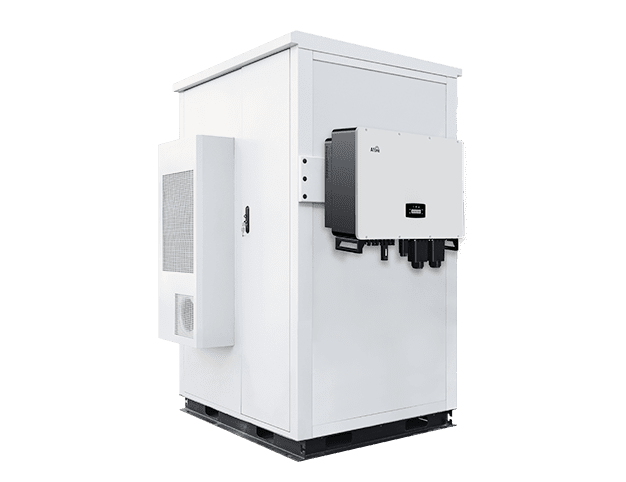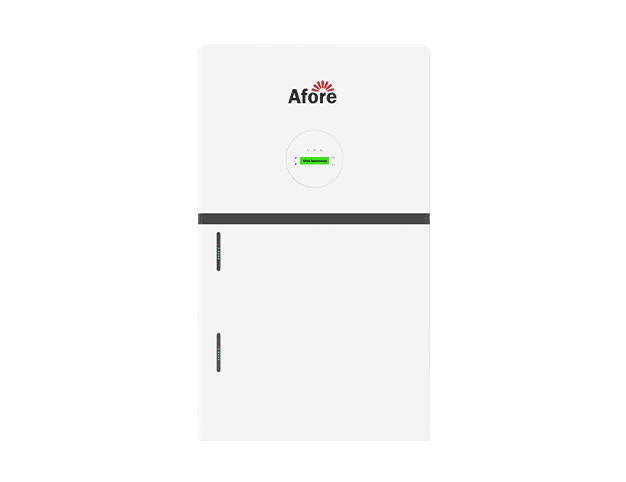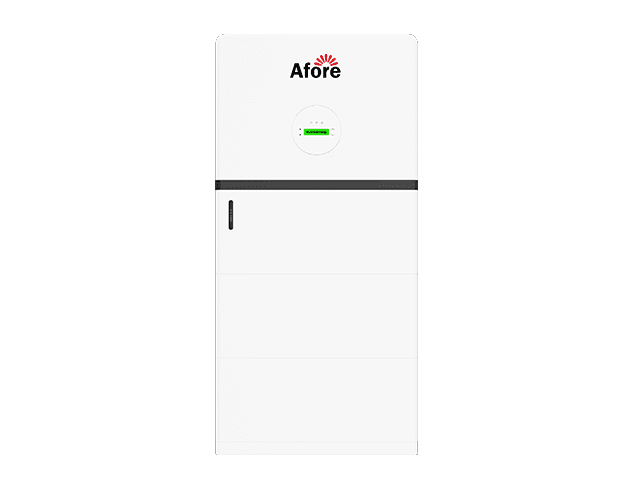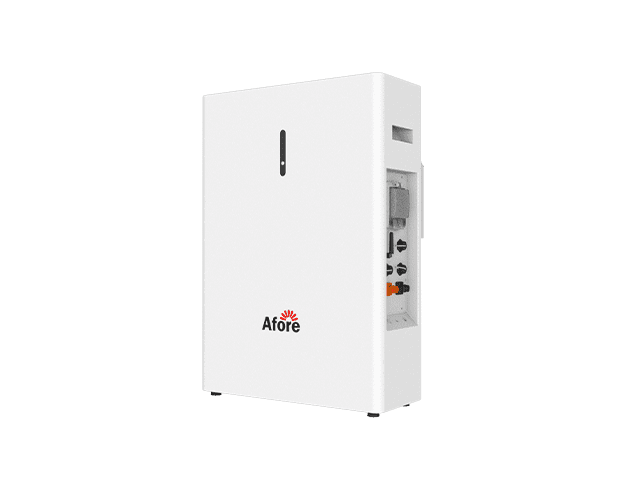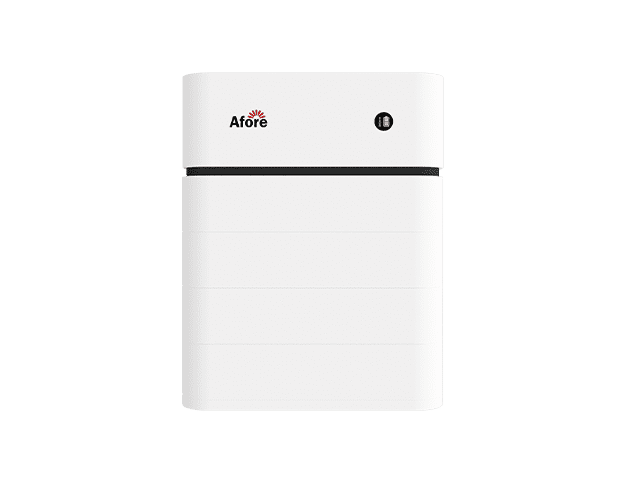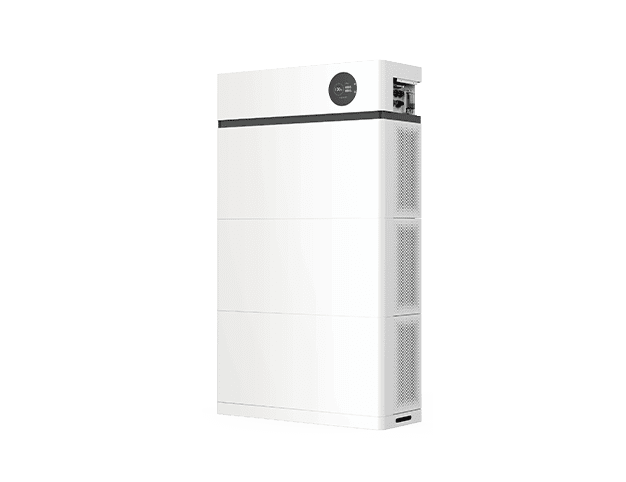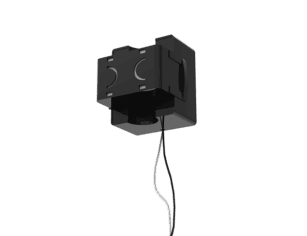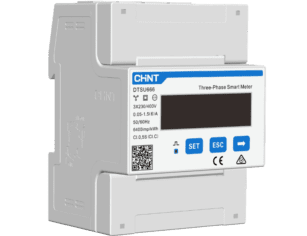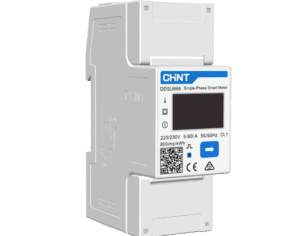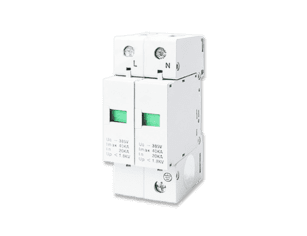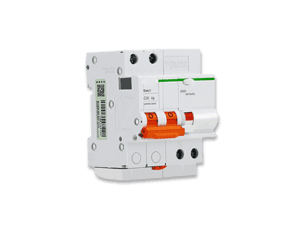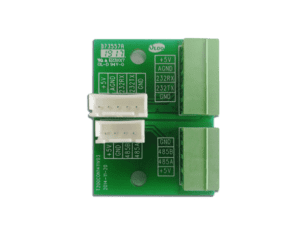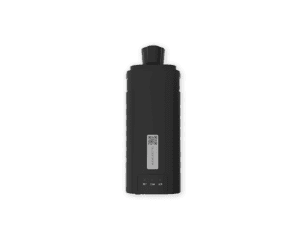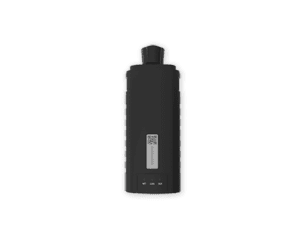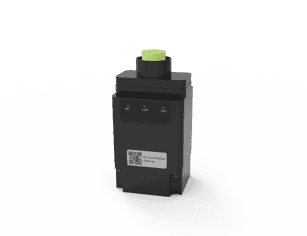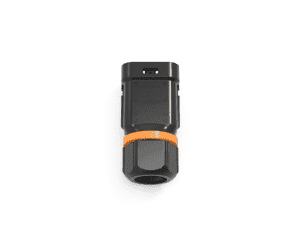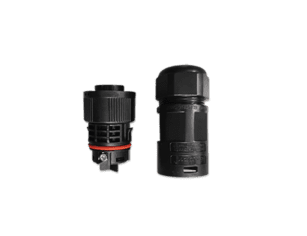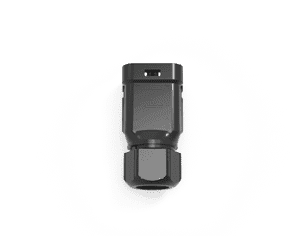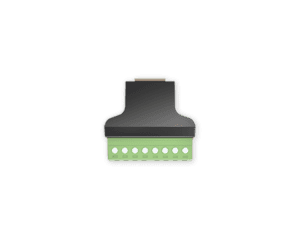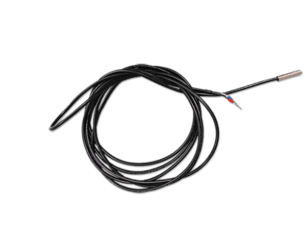Usos do inversor de 400 watts: O que ele alimenta e por que vale a pena

Índice
Quando se trata de soluções de energia portáteis, o inversor de 400 watts é frequentemente ignorado em favor de modelos de maior capacidade. Mas não se deixe enganar por sua modesta potência nominal. Esse dispositivo compacto tem uma potência surpreendente, especialmente para aqueles que buscam uma fonte confiável de eletricidade durante viagens de acampamento, em seus trailers ou como um backup básico em casa.
Neste guia detalhado, vamos abordar tudo o que você precisa saber sobre um inversor de 400 watts. Se você está se perguntando o que posso alimentar com 400 watts, quantos ampères 400 watts equivalem ou se é suficiente para a sua geladeira, nós temos as respostas. Vamos explicar tudo!
Entendendo um inversor de 400 watts
Se você está se dedicando a configurações solares, à vida em uma van ou mesmo apenas a uma sólida energia de reserva fora da rede para seus pequenos aparelhos, provavelmente já se deparou com algo chamado inversor de 400 watts. Mas o que é isso exatamente? Por que as pessoas escolhem esse tamanho? E, mais importante, o que ele realmente pode fazer?
O que é um inversor de 400 watts?
Um inversor de 400 watts é um dispositivo compacto que converte a corrente contínua (CC), que geralmente vem de uma bateria, em corrente alternada (CA), a energia de que precisamos para a maioria dos nossos dispositivos cotidianos. Em outras palavras, ele recebe energia de um dispositivo, como uma bateria de carro de 12V ou uma célula solar, e a converte na energia necessária para pequenos dispositivos eletrônicos ou eletrodomésticos.
Portanto, quando alguém diz: "Estou usando um inversor de 400 watts", está se referindo a um inversor com uma saída contínua de 400 watts. Esse número representa a potência máxima que ele pode fornecer em um determinado momento. Exceder essa potência pode resultar em risco de disparo, superaquecimento ou desligamento da unidade.
Por que esse tamanho é tão popular? Porque é o ideal: potência suficiente para operar equipamentos básicos sem sobrecarregar o sistema ou esgotar as baterias em menos de uma hora.
Como funciona um inversor de 400 watts?
Um inversor de 400 watts funciona com o mesmo princípio básico de qualquer outro inversor, só que menor. Ele recebe a tensão CC (geralmente 12 V ou 24 V), converte-a e estabiliza-a por meio de circuitos internos e, em seguida, emite uma onda senoidal pura ou uma onda senoidal modificada de CA. O modelo de onda senoidal pura é mais caro, mas mais adequado para equipamentos eletrônicos sensíveis.
Vamos supor que você esteja usando-o em seu carro. Conecte o inversor a uma tomada de 12V (ou conecte-o a uma bateria) e pronto - você tem uma mini estação de energia que pode ser usada para carregar um laptop, alimentar uma pequena TV ou até mesmo fazer uma xícara de café, se a energia permitir.
Obviamente, nem todos os dispositivos são iguais. Se estiver se perguntando quais dispositivos de 400 watts podem alimentar, a resposta depende da potência do dispositivo e do surto de inicialização. Mais sobre isso adiante.
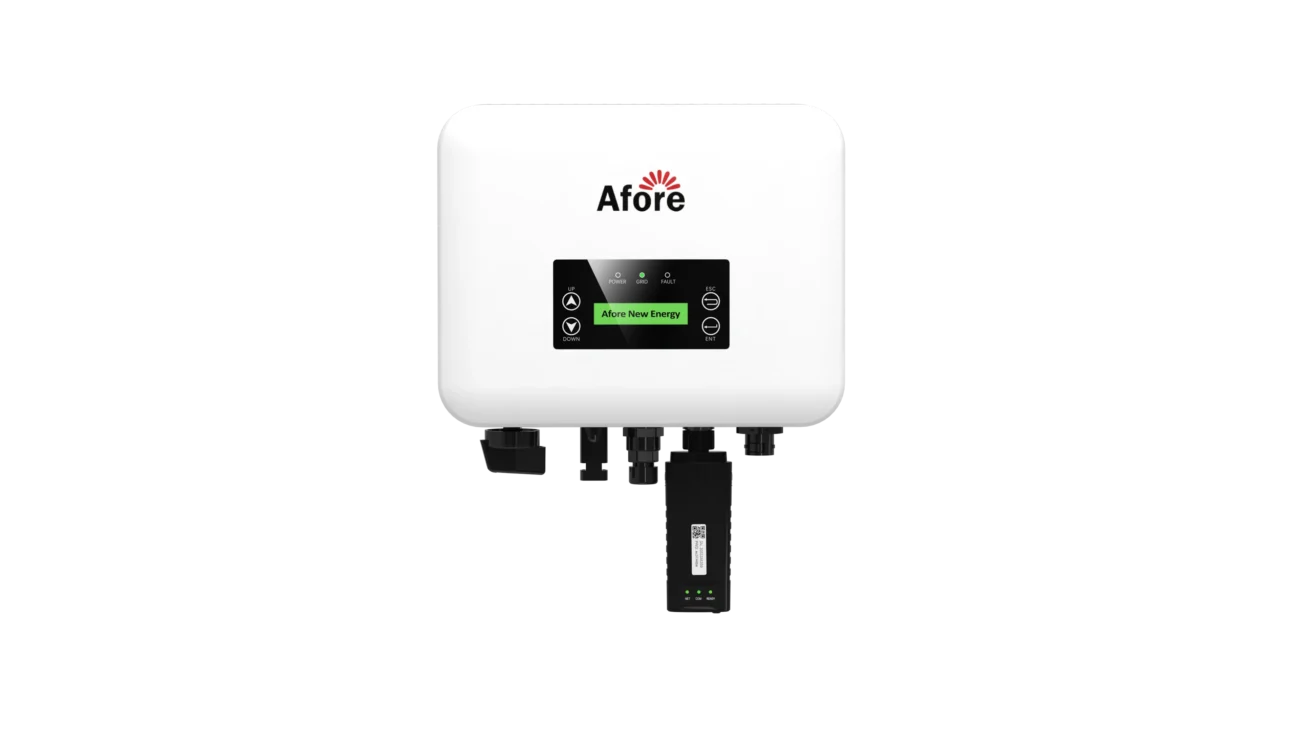
O que você pode alimentar com um inversor de 400 watts?
Uma das perguntas mais comuns que as pessoas fazem é: o que um inversor de 400 watts pode alimentar? Para ser sincero, essa é uma ótima pergunta, pois conhecer a potência do inversor é fundamental para usá-lo de forma segura e eficiente. Um inversor de 400 watts pode não ser capaz de alimentar toda a sua casa, mas com certeza abrange uma gama maior de aplicações do que você imagina.
Vamos detalhá-lo com base em aplicações do mundo real para que você possa determinar se esse tamanho é adequado ao seu estilo de vida.
Dispositivos domésticos comuns com os quais ele pode lidar
Você pode se surpreender com a quantidade de eletrônicos pequenos que um inversor de 400 watts pode suportar. Embora ele não mantenha o ar-condicionado funcionando nem permita que você cozinhe um peru de Ação de Graças no forno, ele é perfeito para necessidades leves. Aqui estão alguns exemplos de dispositivos e eletrodomésticos com os quais ele pode lidar confortavelmente:
- Laptops e tablets (30-100 watts)
- Smartphones e carregadores portáteis (10 a 25 watts)
- TVs de LED de até 32 polegadas (normalmente de 60 a 150 watts)
- Ventiladores de mesa (até 45 watts)
- Consoles de jogos, como o Nintendo Switch ou o PS4 Slim (até 90 watts)
- Lâmpadas pequenas de LED (10 watts ou menos cada)
- Barbeadores elétricos (15-20 watts)
- Roteadores Wi-Fi (10-30 watts)
Se você já se perguntou: "O que posso alimentar com 400 watts?", esta lista lhe dá uma boa noção do escopo. O segredo é verificar a classificação de potência de cada item. Normalmente, isso pode ser encontrado na parte traseira do dispositivo ou no manual do usuário.
É claro que você pode alimentar vários itens ao mesmo tempo, mas a carga total não deve exceder 400 watts. Se estiver carregando um laptop (digamos, 90 W) e ligando uma TV de 100 W, você já está com 190 W. Acrescente um ventilador e você estará chegando à metade do consumo. Sempre deixe espaço livre para evitar estressar o sistema.
Dispositivos que podem não funcionar de forma eficiente
Um inversor de 400 watts tem seus limites, especialmente com aparelhos que exigem um alto pico de inicialização. Aqui estão algumas coisas que ele provavelmente não suportará:
- Microondas (normalmente de 600 a 1200 watts, no mínimo)
- Refrigeradores (o pico de inicialização pode exceder 1200 watts)
- Torradeiras e cafeteiras (700-1500 watts)
- Secadores de cabelo (geralmente mais de 1.000 watts)
- Chaleiras elétricas (800-1500 watts)
- Condicionadores de ar (normalmente mais de 1.000 watts)
É possível que esses dispositivos iniciem momentaneamente com um inversor de 400 watts, especialmente se ele tiver uma alta capacidade de surto, mas isso não será sustentável e poderá causar superaquecimento ou falha no sistema.
Cenários reais para uso de 400 watts
Vamos dar uma olhada em alguns casos de uso prático. Talvez você esteja pegando a estrada em seu trailer ou queira um sistema de backup confiável para curtas interrupções de energia. Veja como um inversor de 400 watts pode se encaixar:
Acampamento e vida em trailers
Acampando com um inversor de 400 watts? Você está com sorte. Ele é ótimo para operar um refrigerador portátil (menos de 100 watts), carregar baterias de câmeras, usar um liquidificador de baixa potência ou preparar uma mini noite de cinema com uma configuração de TV e alto-falante. Ele acrescenta conforto suficiente sem se tornar um glamping completo.
Backup de energia de emergência
Em uma falta de energia, ter um inversor de 400 watts conectado a um banco de baterias pode salvar sua vida. Ele manterá seu telefone carregado, o modem e o roteador ligados e algumas luzes de LED funcionando por várias horas. Pense nele como seu bolso de energia de emergência - não para tudo, mas apenas o suficiente para você sobreviver.
Escritório móvel
Trabalhando remotamente? Se você estiver na estrada ou apenas quiser transformar seu carro em um espaço de trabalho móvel, um inversor de 400 watts pode alimentar confortavelmente seu laptop, ponto de acesso Wi-Fi e um segundo monitor. Isso é basicamente uma configuração completa de escritório, sem precisar de um gerador a gás barulhento.
Cálculo da carga total: Não exagere
Ao planejar sua configuração, sempre se pergunte: O que 400 watts podem alimentar e qual é o consumo total? É fácil ignorar itens pequenos, como carregadores de celular ou alto-falantes, mas cada watt é importante. Uma boa regra geral é ficar em torno de 75-85% da capacidade nominal do inversor para uso regular, ou seja, em torno de 300-340 watts.
Essa margem lhe dá espaço para pequenos picos de energia e mantém o sistema funcionando de forma mais fria e eficiente.
E não se esqueça da eficiência do inversor. Mesmo os melhores modelos não têm eficiência de 100% - a maioria tem em torno de 85-90%. Portanto, se você estiver consumindo 400 watts de carga CA, na verdade estará extraindo cerca de 440-470 watts da bateria. Isso pode afetar o tempo de funcionamento do sistema, especialmente em uma única bateria de ciclo profundo.
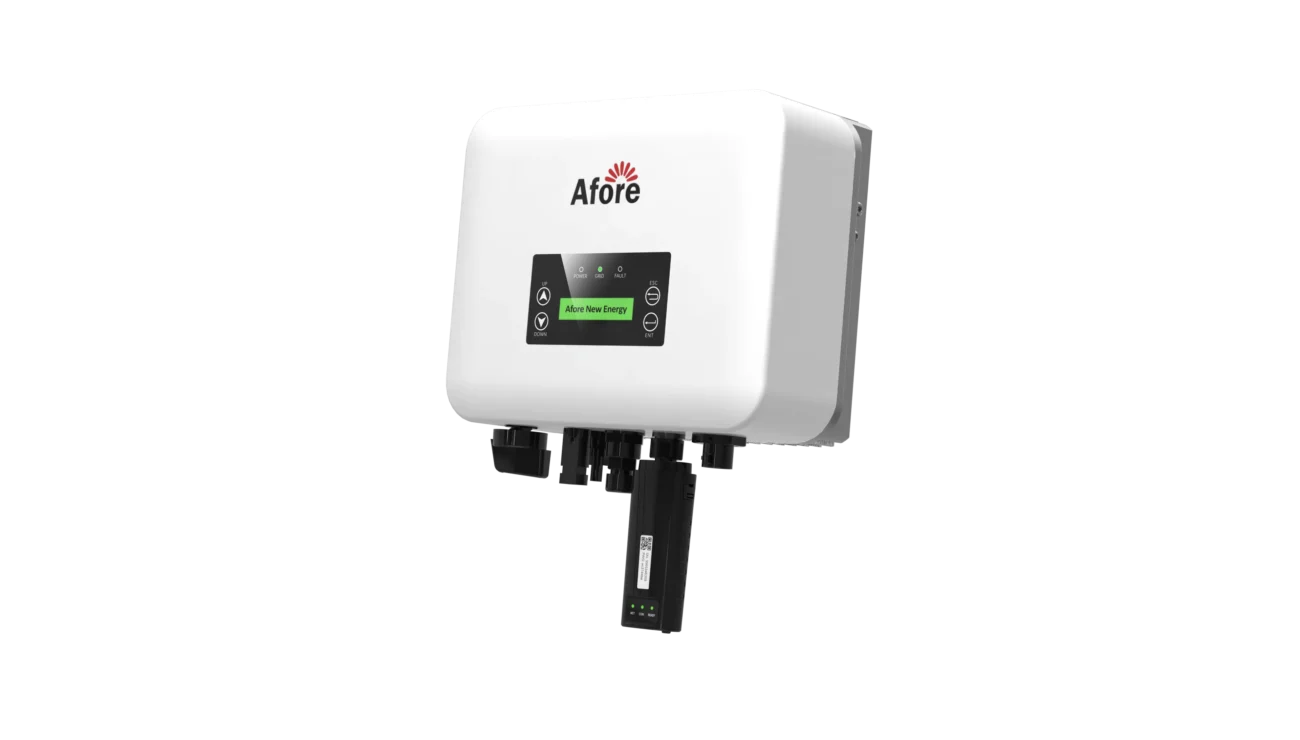
Análise técnica: 400 Watts a Amps e além
Ao mergulhar no mundo dos inversores de energia, é absolutamente fundamental compreender a relação entre watts e ampères. Se você já se perguntou quantos amperes são 400 W ou como 400 watts se traduzem em amperes, você não está sozinho. Esta seção vai desvendar esses detalhes técnicos de uma forma direta e sem rodeios, para que você possa tirar o máximo proveito do seu inversor de 400 watts.
Watts, volts e ampères: O básico
Primeiro, vamos revisar algumas noções básicas de eletricidade. Watts (W), volts (V) e ampères (A) são unidades de medida associadas à eletricidade, mas descrevem coisas diferentes:
- Os watts medem a potência, basicamente a energia consumida.
- O Volt mede o potencial - pense nele como a "pressão" que empurra a corrente em um circuito.
- Os amperes medem a corrente - a taxa na qual uma carga passa por um condutor.
Para determinar quantos amperes de corrente seu inversor de 400 watts consumirá ou produzirá, é necessário saber a tensão do sistema ao qual ele está conectado. As configurações mais comuns são sistemas de bateria CC de 12 ou 24 volts.
Cálculo de ampères para um inversor de 400 watts
A fórmula para calcular os amperes é bastante simples:
Amperes=Watts/Volts
Por exemplo, se o seu inversor de 400 watts estiver conectado a um sistema de bateria de 12 volts:
Amperes=400 watts/12 volts=33,3 amperes
Isso significa que, quando o inversor funcionar com carga total de 400 watts, ele consumirá cerca de 33 amperes da bateria de 12V.
Se estiver usando um sistema de 24V:
Amperes=400 watts/24 volts=16,7 amperes
Observe como a duplicação da tensão reduz o consumo de corrente pela metade - esse é um dos motivos pelos quais os sistemas de 24 V podem ser mais eficientes e menos estressantes para a fiação.

Considerando as correntes de surto
Uma parte complicada dos inversores - especialmente os menores, como um inversor de 400 watts - é a corrente de pico ou de inicialização. Muitos dispositivos, especialmente motores e compressores, exigem um pico de energia significativamente maior do que a potência de funcionamento quando são ligados pela primeira vez.
Por exemplo, um pequeno refrigerador pode funcionar com 100 watts, mas pode ter um pico de até 600 watts por um ou dois segundos para ser ligado. Embora a classificação contínua do seu inversor possa ser de 400 watts, sua capacidade de pico pode ser de cerca de 800 watts para uma breve explosão.
Esse pico significa que o inversor consumirá brevemente mais amperes da bateria. Usando nosso exemplo de 12 V, um pico de 800 watts se traduz em cerca de 66,7 amperes momentaneamente - e é por isso que o dimensionamento adequado dos cabos e das baterias é tão importante.
Capacidade da bateria e tempo de execução
Saber quantos amperes correspondem a 400 W ajuda a calcular por quanto tempo o inversor pode funcionar em um determinado banco de baterias. A capacidade da bateria é medida em ampères-hora (Ah). Por exemplo, uma bateria de 12V de 100 Ah teoricamente pode fornecer 100 ampères por uma hora ou 1 ampère por 100 horas.
Se o seu inversor consumir 33 amperes com carga total de 400 watts, operá-lo continuamente drenaria uma bateria de 100 Ah em cerca de 3 horas (levando em conta a eficiência da bateria e as perdas do inversor).
Portanto, se você estiver se perguntando quanto tempo um inversor de 400 watts durará em sua configuração, isso se resume à capacidade e à carga da bateria.
Eficiência e perda de energia
Nenhum inversor é 100% eficiente. Um inversor típico de 400 watts funciona com eficiência de 85 a 95%, o que significa que parte da energia é perdida como calor durante a conversão de CC (bateria) para CA (eletricidade doméstica).
Essa perda afeta o consumo real da bateria e o tempo de execução. Por exemplo, com a eficiência de 90%, para fornecer 400 watts ao seu dispositivo, o inversor na verdade extrai cerca de 444 watts da bateria:
Energia da bateria=400 watts/0,9≈444 watts
Isso equivale a cerca de 37 amperes a 12 volts em vez de 33 amperes, portanto, sempre planeje tendo em mente a eficiência.
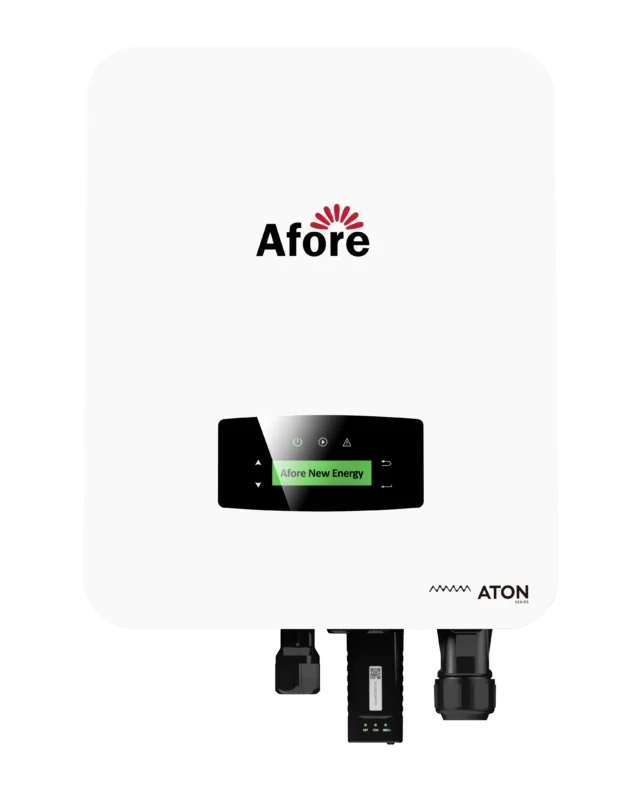
Aplicações e benefícios do uso de um inversor de 400 watts
Quando se trata de soluções de energia portáteis, um inversor de 400 watts oferece um equilíbrio perfeito entre tamanho, potência e versatilidade. Se você estiver acampando, trabalhando remotamente ou lidando com quedas de energia ocasionais, saber onde e como usar melhor um inversor de 400 watts pode evitar muitos problemas. Nesta seção, examinaremos as aplicações mais comuns e os principais benefícios que tornam esse tamanho de inversor uma escolha popular.
Aplicações comuns para um inversor de 400 watts
Um inversor de 400 watts é ideal para alimentar dispositivos elétricos de pequeno e médio porte. Vamos detalhar os cenários típicos em que ele se destaca:
- Acampamentos e aventuras ao ar livre: Para acender luzes de LED, carregar smartphones, laptops ou pequenos ventiladores, um inversor de 400 watts é compacto e leve o suficiente para caber em sua mochila ou trailer sem esgotar a bateria rapidamente.
- Backup de energia de emergência: Quando falta energia, esse inversor pode operar dispositivos essenciais como rádios, pequenas TVs ou até mesmo um frigobar por curtos períodos.
- Uso em veículos e trailers: Perfeito para alimentar aparelhos em movimento - pense em sua cafeteira, ferramentas elétricas ou um carregador de câmera de painel. Ele fornece uma fonte de alimentação CA segura e confiável a partir do sistema de 12V do seu veículo.
- Home Office em trânsito: se você precisar trabalhar remotamente em um veículo ou cabine sem energia da rede elétrica, um inversor de 400 watts permite operar laptops, roteadores ou impressoras com eficiência.
- Pequenos eletrodomésticos: Dispositivos como barbeadores elétricos, ferros de passar roupa ou até mesmo fogões lentos (com consumo de energia modesto) podem funcionar com esse inversor.
Por que escolher um inversor de 400 watts? Benefícios que você deve conhecer
Escolher o tamanho certo do inversor significa entender as vantagens que ele traz para suas necessidades específicas. Veja por que um inversor de 400 watts é uma escolha popular:
- Portabilidade e conveniência: Pequeno o suficiente para ser transportado com facilidade, mas potente o suficiente para lidar com dispositivos essenciais do dia a dia, ele se encaixa perfeitamente para pessoas em movimento.
- Eficiência energética: Geralmente opera com taxas de eficiência mais altas em comparação com inversores maiores ao operar cargas pequenas, o que significa maior duração da bateria e menos desperdício de energia.
- Econômico: Em comparação com inversores maiores, um inversor de potência de 400 watts é econômico tanto no preço de compra quanto em termos de instalação e fiação.
- Flexibilidade: Suporta uma ampla variedade de dispositivos com consumo de energia baixo a médio, atendendo a muitas necessidades cotidianas sem a complexidade de grandes configurações.
- Recursos de segurança: A maioria dos modelos vem com proteções integradas, como desligamentos por sobrecarga, curto-circuito e superaquecimento, essenciais para uma operação segura, seja em casa, em um veículo ou ao ar livre.
Situações a serem evitadas com um inversor de 400 watts
Embora o inversor de 400 watts seja versátil, ele não foi projetado para alimentar aparelhos pesados ou cargas altas contínuas. Evite conectar dispositivos que exijam:
- Alta potência de pico além da capacidade de pico do inversor (como grandes refrigeradores ou ferramentas elétricas com grandes motores).
- Cargas contínuas acima de 400 watts - isso pode causar sobrecarga no inversor e possíveis danos.
- Aparelhos com componentes eletrônicos sensíveis que precisam de uma saída de onda senoidal pura (a menos que o inversor seja compatível).
Como um inversor de 400 watts oferece suporte a soluções de energia verde
Um caso de uso cada vez mais popular para um inversor de potência de 400 watts é a integração com pequenos sistemas de painéis solares. Em conjunto com um controlador de carga solar e um banco de baterias, ele permite:
- Geração de energia fora da rede para cabanas, pequenas casas ou locais remotos.
- Uso sustentável de energia por meio da conversão de energia solar CC em energia CA utilizável.
- Independência energética durante quedas de energia ou em áreas sem eletricidade confiável.
Esse inversor de tamanho prático geralmente combina bem com os melhores painéis solares de 400 watts (consulte solarreviews.com para conhecer as melhores opções), o que o torna uma solução de energia completa para usuários preocupados com o meio ambiente.

Conclusão
O inversor de 400 watts é realmente um dispositivo de energia superprático para todos aqueles que estão procurando uma fonte de energia CA estável. Esteja você acampando para curtir a natureza, trabalhando remotamente para cuidar dos negócios ou precisando de energia de reserva de emergência, esse inversor pode lidar com isso com facilidade. Ele encontra o equilíbrio perfeito entre portabilidade e desempenho.
Compreender a faixa de potência de 400 watts e como gerenciar com eficiência a capacidade da bateria permitirá que você obtenha o máximo do seu inversor de 400 watts. Não se esqueça de que conhecer a relação entre 400 watts e amperagem, bem como os limites do inversor, evitará o risco de sobrecarga do sistema e deixará seu equipamento mais seguro. Embora não seja capaz de alimentar uma casa inteira nem de acionar todos os aparelhos de alta potência, ele é definitivamente a melhor opção para pequenos dispositivos eletrônicos, lâmpadas e alguns equipamentos de baixa potência.
Adquirir um inversor de 400 watts de alta qualidade com recursos de segurança lhe dará tranquilidade e potência total quando for necessário. Se estiver procurando um inversor compacto e acessível para suas necessidades diárias, vale a pena considerar um inversor de 400 watts.
Se estiver procurando por inversores solares de alta potência, visite a Afore, uma renomada fabricante de inversores solares.
Perguntas frequentes
O que pode ser usado com um inversor de 400 watts?
Um inversor de 400 watts pode alimentar uma variedade de dispositivos elétricos de pequeno a médio porte. Pense em laptops, carregadores de celular, luzes de LED, TVs pequenas, ventiladores e até mesmo aparelhos de cozinha compactos, como cafeteiras ou fogões de cozimento lento, desde que o consumo de energia fique abaixo de 400 watts continuamente. É perfeito para acampamentos, trailers e backup de emergência, mas não suporta aparelhos de alta potência, como refrigeradores de tamanho normal ou ferramentas elétricas com motores pesados.
Quantas baterias são necessárias para um inversor de 400 watts?
O número de baterias necessárias depende de quanto tempo você deseja que seus dispositivos funcionem e da capacidade da bateria (medida em ampères-hora). Para um sistema de 12 V, como um inversor de 400 watts consome cerca de 33 amperes com carga total, uma bateria de 100 Ah pode, teoricamente, operá-lo por cerca de 3 horas (levando em conta a eficiência do mundo real e as perdas do inversor). Se você quiser um tempo de execução maior, adicionar mais baterias em paralelo aumenta a capacidade. Procure sempre usar baterias de ciclo profundo para obter o melhor desempenho e vida útil.
400 watts podem alimentar uma casa?
Na maioria dos casos, um inversor de 400 watts não pode alimentar uma casa inteira. As necessidades típicas de energia doméstica são de vários milhares de watts, muito além do que um inversor de 400 watts pode suportar. No entanto, ele pode operar dispositivos essenciais de baixa potência durante interrupções curtas ou em casas pequenas com necessidades elétricas mínimas. Para uma reserva completa da casa, é necessário um sistema de inversor muito maior.
Um refrigerador funciona com 400 watts?
Um refrigerador padrão geralmente requer mais energia do que 400 watts quando é ligado devido ao pico do compressor. Embora a potência de funcionamento possa ser inferior a 400 watts, o pico de inicialização pode exceder a capacidade desse inversor, fazendo com que ele se desligue ou falhe. Alguns frigobares pequenos ou com baixo consumo de energia podem funcionar com um inversor de 400 watts, mas sempre verifique cuidadosamente os requisitos de sobretensão e as especificações do inversor.
Quanto tempo dura um inversor de 400 watts?
A vida útil de um inversor de 400 watts depende da qualidade de construção, dos padrões de uso e da manutenção. Os inversores de alta qualidade podem durar vários anos, mesmo com o uso diário. Sobrecarregar o inversor ou operá-lo continuamente com carga máxima pode reduzir sua vida útil. A ventilação adequada, evitando o superaquecimento, e o uso do inversor dentro de sua capacidade nominal o ajudarão a durar mais.
Qual é a diferença entre um inversor de 400 watts de onda senoidal pura e de onda senoidal modificada?
Os inversores de onda senoidal pura produzem energia suave e limpa, semelhante à eletricidade das tomadas de sua casa, o que os torna adequados para eletrônicos sensíveis, como laptops, dispositivos médicos e equipamentos de áudio. Os inversores de onda senoidal modificada são mais baratos, mas produzem um sinal de energia mais áspero, que pode causar zumbido ou superaquecimento em alguns dispositivos. Para um inversor de 400 watts, a escolha da tecnologia de onda senoidal pura geralmente oferece melhor compatibilidade e segurança do dispositivo.
Quantos amperes um inversor de 400 watts consome?
Usando a fórmula simples amperes = watts ÷ volts, um inversor de 400 watts conectado a uma bateria de 12 V consome cerca de 33 amperes com carga total. Se seu sistema for de 24 volts, ele consome cerca de 16,7 amperes. Esse cálculo o ajuda a dimensionar corretamente as baterias e os cabos.
Posso usar um inversor de 400 watts para carregar um laptop?
Com certeza! O carregamento de laptops geralmente requer entre 30 e 90 watts, o que está dentro da capacidade de um inversor de 400 watts. Apenas certifique-se de que o inversor produza a tensão CA e a forma de onda corretas (de preferência, onda senoidal pura) para evitar qualquer risco para o carregador do laptop.
Um inversor de 400 watts é adequado para sistemas de energia solar?
Sim, muitas configurações solares fora da rede usam inversores de 400 watts para necessidades de energia pequenas e médias. Eles convertem a eletricidade CC armazenada nas baterias (carregadas por painéis solares) em energia CA utilizável para dispositivos domésticos. Quando combinados com um controlador de carga solar compatível e capacidade suficiente de bateria, eles oferecem soluções confiáveis de energia verde.
Quais recursos de segurança devo procurar em um inversor de 400 watts?
Bons inversores de 400 watts incluem proteções como desligamento de sobrecarga, proteção contra curto-circuito, alarme/desligamento de baixa tensão, proteção contra superaquecimento e proteção contra polaridade reversa. Esses recursos de segurança ajudam a evitar danos ao inversor, às baterias e aos dispositivos conectados, o que é essencial para uma operação sem preocupações.




